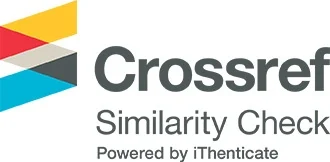Internet y control social: Entre rizoma y Gran Hermano.
-
Massimo Ragnedda
 ragnedda@gmail.com
ragnedda@gmail.com
Descargas
Resumen
Gran hermano y rizoma son metáforas cada vez más utilizadas cuando se habla de Internet. En la red estamos continuamente monitorizados: se recogen y catalogan datos e información como si se tratase de un cyberpanopticón: de ahí la metáfora del gran hermano electrónico. La red siente la necesidad de imponer un control cuyo objetivo es uniformar el comportamiento de los usuarios. Pero Internet es, además, una estructura rizomática difícilmente encajable en modelos rígidos. Internet rechaza, por su propia naturaleza, la centralización del poder en beneficio de la autogestión. ¿Cómo pueden coexistir un sistema de vigilancia tipo gran hermano con las características rizomáticas de la red? Estas este artículo se analizan ambas metáforas y se busca una síntesis de ambos conceptos.Palabras Clave
ALLEN, M. (1994). “See You in the City!” Peth's Citiplace and the Space of Surveillance. En K. Gibson, S. Watson (Eds.), Metropolis Now: Planning and the Urban in Contemporary Australia (pp. 137-147). Sydney: Pluto.
BAUDRILLARD, J. (1996). Il delitto perfetto, Milano: Raffaello Cortina Editore.
BAUMAN, Z. (2001). Dentro la globalizzazione. Le conseguenze sulle persone. Roma: Laterza.
BERDAYES, V. (2002). Traditional Management Theory as Panopticon Discourse: Language and the Constitution of Somatic Flows. Culture and Organization, 8, 35-49.
BIGO, D. (2002). Security and immigration: toward a critique of the governmentality of unease. Alternatives, 27, 63-92.
BOUSQUET, G. (1998). Space, Power, Globalization: The Internet Symptom, Societies, 4, 105-113.
BUTCHART, A. (1996). The Industrial Panopticon: Mining and the Medical Construction of Migrant African Labour in South Africa, 1900-1950. Social Science and Medicine, 42, 185-197.
CASTELLS, M. (2007). Communication, Power and Counter Power in the Network Society. International Journal of Communication, 238-266.
DE ANGELIS, M. (Mayo 2001). Global Capital, Abstract Labour, and the Fractal Panopticon.
The Commoner, 1. Recuperado el 10 de Agosto de 2010 de
http://www.commoner.org.uk/fractalpanopt.pdf
DELEUZE, G., Guattari, F. (1977). Rizoma, Parma-Lucca: Pratiche editrice, 1977.
FOUCAULT, M. (1976). Sorvegliare e punire. Torino: Einaudi.
GILL, S. (1995). The Global Panopticon: The Neo-Liberal State, Economic Life, and Democratic Surveillance. Alternatives, 20, 1-49.
GOOMBRIDGE, N. (2003), Crime Control or Crime Culture TV?. Surveillance and Society, 1, 30-46. Recuperado el 19 de Agosto de 2010 de http://www.surveillance-and-society.org/articles1/cctvculture.pdf.
GORDON, D. (1986). The Electronic Panopticon: A Case-Study of the Development of the National Criminal Records System. Politics and Society. 15, 483-511
ISSALE, J. (1995). Che cos‘è la realtà virtuale. Roma: Theoria.
KOSKELA, H., Webcams, (2004). TV Shows and Mobile Phones: Empowering Exhibitionism. Surveillance and Society, 2, 199-215. Recuperado el 12 de Agosto de 2010 de
http://www.surveillance-and-society.org/articles2(2)/webcams.pdf
LEMAN-LANGOIS, S. (2003). The Myoptic Panopticon: The Social Consequences of Policing Through the Lens. Policing and Society. 13, 43-58.
LYON, D. (1997). L‘occhio elettronico. Privacy e filosofia della sorveglianza. Milano: Feltrinelli.
MALDONADO, T. (1992). Reale e virtuale, Milano: Feltrinelli.
MANN, S., Nolan, J., Wellman, B. (2003). Sourveillance: Inventing and Using Wearable Computing Devices for Data Collection in Surveillance Environments, Surveillance and Society, 1, 331-355. Recuperado el 21 de Agosto de 2010 de
http://www.surveillance-and-society.org/articles1%283%29/sousveillance.pdf.
MARX, G.T. (1998). Undercover: Police Surveillance in America. Berkeley: University of California Press.
MATHIESEN, T. (1997). The viewer society. Michel Foucault”Ÿs “Panopticon” revisited. Theoretical Criminology, 1, 215-234.
ORWELL, G. (1949). Nineteen Eighty-Four. London: Penguin Books.
__________. (1946). Animal Farm. London: Penguin.
POSTER, M. (1990). The Mode of Information. Poststructuralism and Social Context, Cambridge: Polity Press.
RAAB, C.D. (1999). Privacy, democracy, information. En B.D. LOADER, (eds), The Governance of Cyberspace (pp. 155-74). London: Routledge.
SANDOVAL, C. (2000). Methodology of the oppressed. Minneapolis: University of Minnesota Press.
SWEENY, R. (2004). The pedagopticon: Beyond „discipline and punish”Ÿ in the classroom. Presentation at 2004 New Forms Festival, Vancouver, BC, Canada
WACQUANT L. (2001). The Penalisation of Poverty and the Rise of Neo-Liberalism. European Journal on Criminal Policy and Research, 9, 401-412.
Descargas
Publicado
Cómo citar
Número
Sección
Licencia
1. Política propuesta para revistas que ofrecen acceso abierto
Aquellos autores/as que tengan publicaciones con esta revista, aceptan los términos siguientes:
- Los autores/as conservarán sus derechos de autor y garantizarán a la revista el derecho de primera publicación de su obra, el cuál estará simultáneamente sujeto a la Licencia de reconocimiento de Creative Commons Reconocimiento (CC -BY 4.0)
 que permite a terceros compartir la obra siempre que se indique su autor y su primera publicación en esta revista.
que permite a terceros compartir la obra siempre que se indique su autor y su primera publicación en esta revista. - Los autores/as podrán adoptar otros acuerdos de licencia no exclusiva de distribución de la versión de la obra publicada (p. ej.: depositarla en un archivo telemático institucional o publicarla en un volumen monográfico) siempre que se indique la publicación inicial en esta revista.
- Se permite y recomienda a los autores/as difundir su obra a través de Internet (p. ej.: en archivos telemáticos institucionales o en su página web) antes y durante el proceso de envío, lo cual puede producir intercambios interesantes y aumentar las citas de la obra publicada. (Véase El efecto del acceso abierto).












